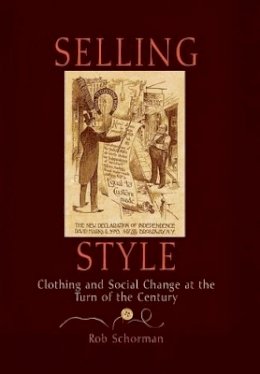
Selling Style: Clothing and Social Change at the Turn of the Century
Rob Schorman
As the turn of the twentieth century approached, clothing and fashion reflected Americans' concerns with the rapidly changing social and cultural landscape. Clothing helped define social status, relationships between men and women, and ideals of American citizenship. The heightened importance of mass media, especially advertising, during this period set in motion changes in many industries, but most notably in fashion. In Selling Style, Rob Schorman documents the fascinating and important relationship among clothing, gender roles, and cultural expectations at a significant moment in American history.
Men were the first to adopt ready-made clothing en masse, and during this period most wore factory-made suits that were produced in large quantities. In contrast, the acceptance of ready-made apparel in women's fashion lagged far behind, and much clothing for women continued to be custom-made for the individual. Changes in production techniques and consumer markets in part shaped this development in the clothing industry, but according to Schorman the root cause of the schism between men's and women's apparel was culturally driven.
By examining changing styles and attitudes toward fashion as expressed in advertisements, popular magazines, mail-order catalogs, and etiquette books, Selling Style reveals that wider social dynamics and gender roles had a much more significant influence on the clothing industry than historians have found. The book also depicts the advance of consumerism as more piecemeal and conflicted than previous histories imply, with cultural values continually made and remade through everyday acts of consumption, and in the process providing the groundwork for twentieth-century approaches to gender, selfhood, and national identity.
Product Details
About Rob Schorman
Reviews for Selling Style: Clothing and Social Change at the Turn of the Century
Nancy L. Green, author of Ready to Wear and Ready to Work
"Schorman demonstrates in this readable study of 1890s U.S. society how fashion-which he defines as clothing everyone wears and the symbolic system connected to its choice-reflects the cultural dynamics caused by rapid social change and remnants of past attitudes. The book reveals that clothing was closely integrated with issues of gender, class, and personal and national identity."
Choice
"Rob Schorman delves into the dynamic, troubled period of the 1890s to explore the marketing of men's and women's clothing. Using a wide variety of consumer and trade literature, he elucidates the appeals to social distinction, quality, individuality, patriotism, and belonging that characterized American advertising during that decade."
Pennsylvania Magazine of History and Biography
